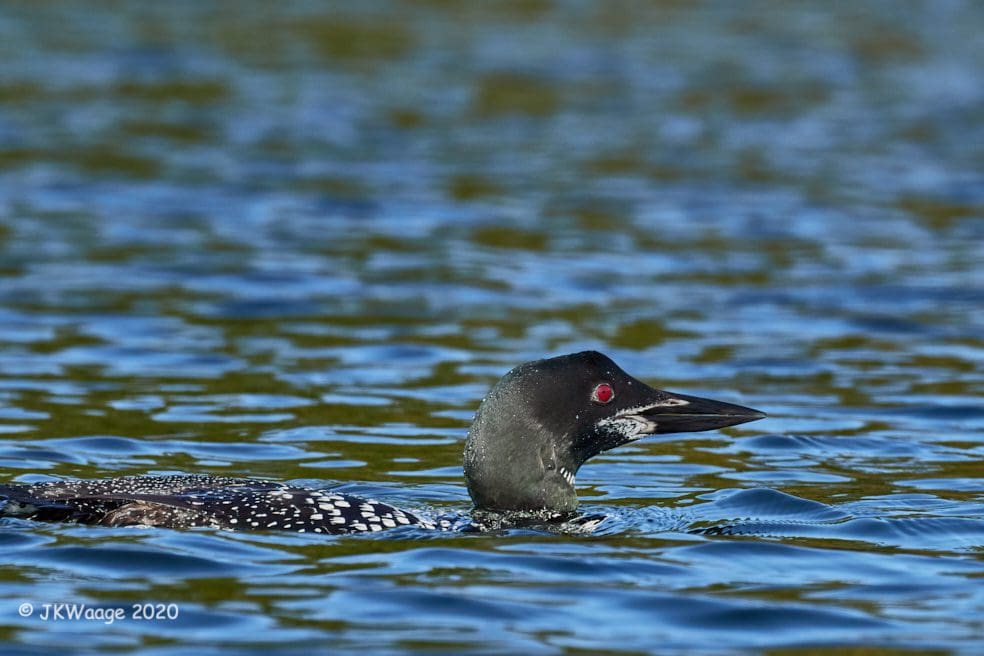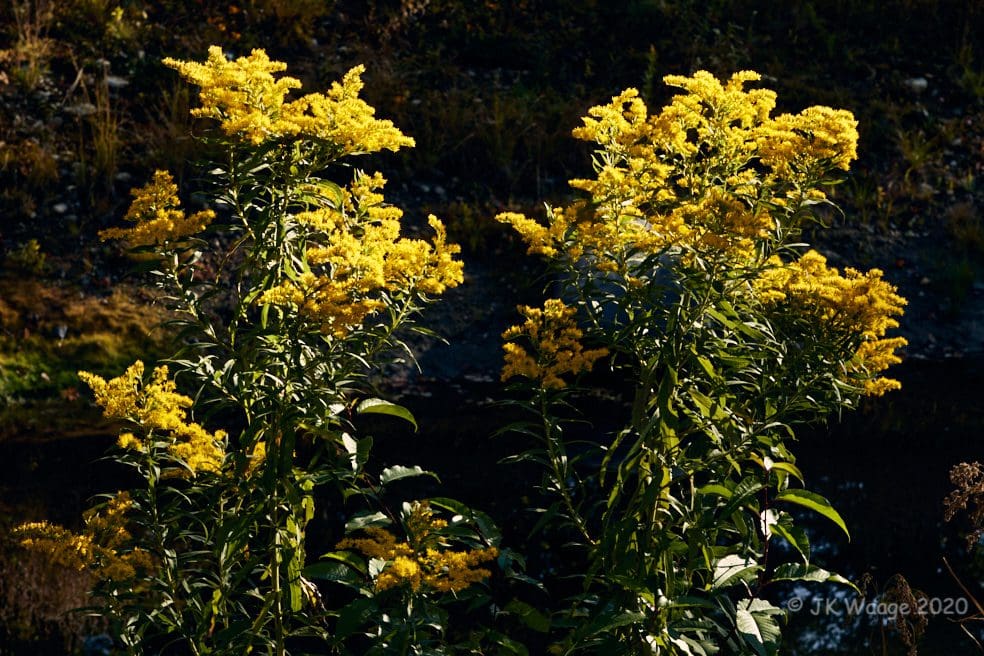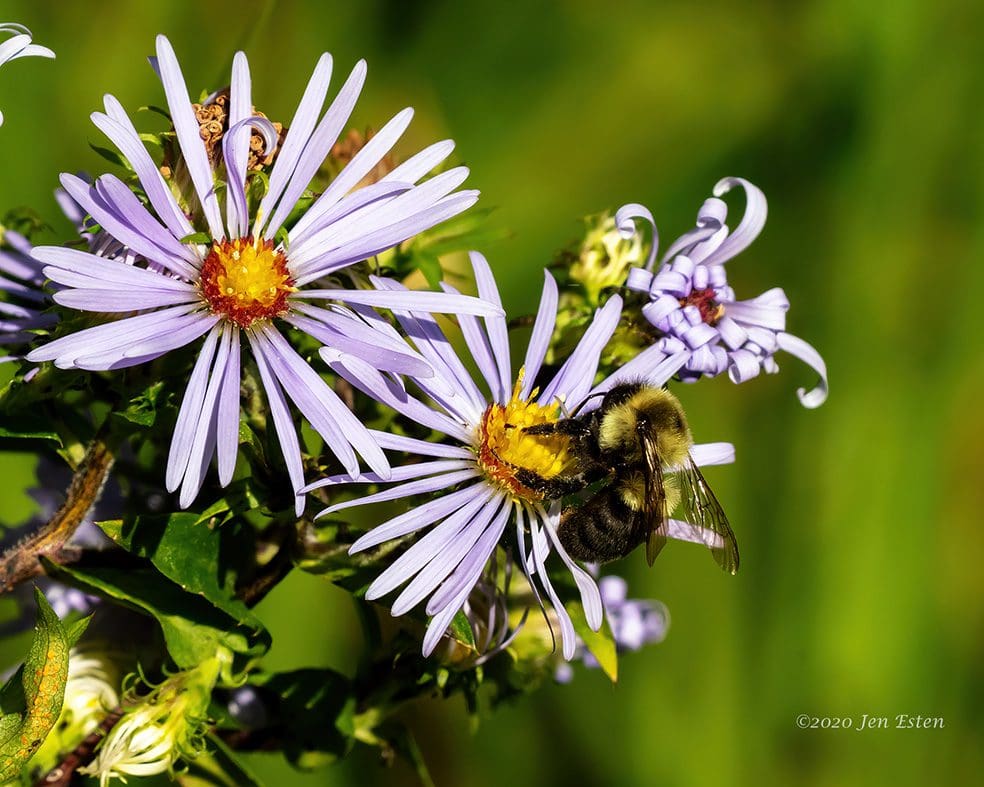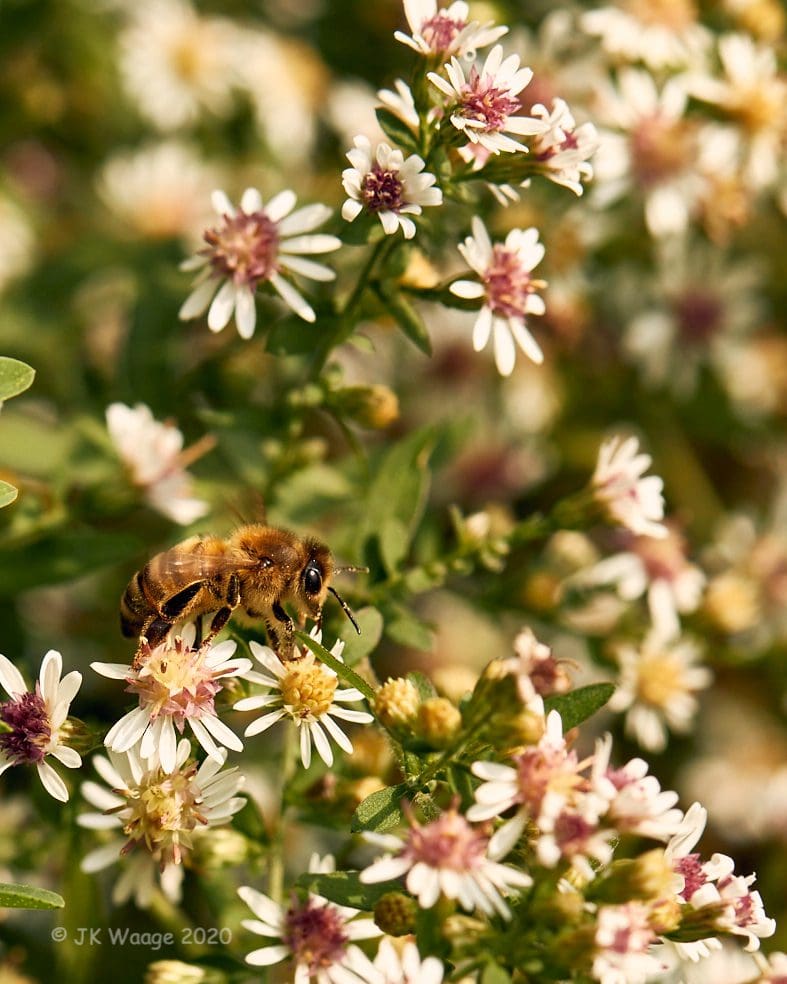Asters, Fall Visitors and Knotweed

Loon Update
It has been a while since we showed you how the loons are doing. Although the father seems to have left a bit early this year, Pablo’s mom still is with him a lot. This photo (from September 13th) shows you how big he has become.

Pablo has a full set of wing feathers and continues to try them out.

He had the lake pretty much to himself Sunday. His eyes are getting redder. Mom has begun her molt to winter plumage.


Fall Visitors
You may have noticed white feathers floating on the lake. The Canada Geese have arrived on their southward travels.

Lots of other migrating birds are showing up in yards and woods around the lake. If you take a walk along the open edge of a woods, road or pond, you are likely to see migrating songbirds. Bring your binoculars!
Among many species visiting our yard last week were a Scarlet Tanager (1st picture after this) and a Yellow Warbler (2nd picture after this) in their fall plumage.


Suddenly there are Northern Flickers everywhere! Unlike most woodpeckers, flickers usually forage on the ground for insects. They hammer their long beaks into the ground, probing for ants, beetle larvae, and other insects with a long, sticky tongue. They will also eat fruit in the winter. Flickers are one of 234 species of woodpeckers worldwide. So, what are they doing on the ground? Actually, many species of woodpeckers forage on the ground, and Northern Flickers are among a group that specializes on eating ants.

Like most woodpeckers, their long tongue wraps around the back of their brain and can extend up to 1.5 inches beyond their bill. They use their beak and long tongue to forage on the ground in much the same way other woodpeckers dig into wood to find insects. Their stiff tail feathers and large feet allow flickers to perch on tree trunks like other woodpeckers.

In New England we have the yellow-shafted subspecies of Northern Flicker. You can see the yellow shaft (or quill) in the wing feathers above. In the west the subspecies is the red-shafted Northern Flicker. In the middle of the country they tend to hybridize.
Flickers are easy to identify by their black breast patch, red-V on the back of their head and white rump patch (seen when flying).
Good Native Fall Plants
Late Summer through early Fall brings a new set of flowers for local pollinators. Let’s focus on asters, the fall version of daisies.
We are blessed with a number of species of asters and goldenrods which belong to the Aster family. They often grow side by side – like the two species of goldenrods growing above an aster.

Early in my life I was told that one reason it gets colder in the Fall is that the goldenrods capture the sun’s glow. Sure looks that way!

Asters vary in size and color from tiny and white (like the one in the lower left of the photo below) to large and purple/blue like the bush sized New York Aster.

Dandelions helped local pollinators bridge the gap between winter and the flowers of spring. Asters and goldenrods, similarly provide much needed late summer nectar and pollen.
In the photo below, a bumblebee visits a New York Aster (Symphyotrichum novi-belgii).

Honeybees are all over the smaller asters in our yard. Wasps, like the brown Polistes on the White Goldenrod (Solidago bicolor), are visiting the goldenrods as well.


Many people think these “weedy” asters and goldenrods are the source of late summer and fall allergies. They tend to keep them out of their yards and fields. However, these species do not cause allergies for most people and the real culprit is Ragweed (Ambrosia artemisiifolia) a native roadside weed that also happens to be in the aster family. Here is a photo to help identify it.

Bad Non Native Plant
The PLPA would like to remind you that early Fall is a great time to identify and help eradicate Japanese Knotweed.

Knotweed’s flowers are easy to spot as you drive or walk past it.
One of our most damaging invasive weeds, Japanese Knotweed, is now in its flowering cycle. It is a prohibited invasive in NH, and there are multiple large patches of it around Pleasant Lake and throughout the New London area. It is very difficult to control as it’s roots grow 6 feet down and it can resprout from cuttings.
Japanese Knotweed can cause damage to home foundations, roads and septic fields. Shortly before the season’s killing frost is a good time for treatment. Or you can find it now and get after it in the spring. Simply cutting it down is a bad approach because it can regenerate from even small pieces of stem or root. Please check the links below for how to identify and control this very invasive weed:
New Hampshire Department of Agriculture

Its leaves alternate sides along a zig-zag red branch and the stems of the plant resemble bamboo (though it is not a bamboo but a smartweed relative).
To be continued…Jen and Jon
All photographs and words by Jen Esten and Jon Waage
